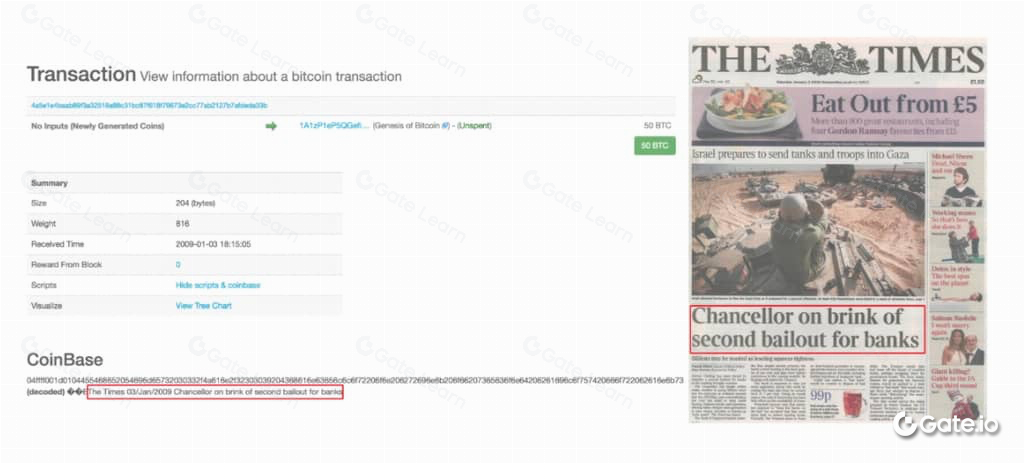Bắt đầu với Bitcoin
Sơ lược về lịch sử của Bitcoin và sự trỗi dậy của nó như một biểu tượng văn hóa của tiền điện tử
Bitcoin là một loại tiền kỹ thuật số phi tập trung cung cấp phương thức thanh toán ngang hàng cho phép mọi người hoàn thành các giao dịch dựa trên chuỗi khối mà không cần sự tham gia của bên thứ ba như ngân hàng hoặc chính phủ. Bài báo “Bitcoin: Hệ thống tiền mặt điện tử ngang hàng” được xuất bản dưới bí danh Satoshi Nakamoto vào năm 2008, đánh dấu sự ra đời của Bitcoin.
Bitcoin đã tồn tại hơn 13 năm và trải qua nhiều thăng trầm. Bất chấp cuộc tranh luận đang diễn ra về giá trị của nó, Bitcoin đã từ chỗ không được biết đến trở thành một cơ hội đầu tư nghiêm túc của các tổ chức tài chính truyền thống hơn. Ngay cả những lợi thế của nó về tính phi tập trung, tổng khối lượng cố định và không có giới hạn quốc gia đã thu hút một nhóm tín đồ có sự đồng thuận mạnh mẽ về giá trị của Bitcoin như một tài sản lưu trữ giá trị, tránh lạm phát. Họ đã gọi Bitcoin là “vàng kỹ thuật số”.
Bitcoin có nguồn gốc như một cuộc nổi loạn chống lại tài chính truyền thống
Vào ngày 3 tháng 1 năm 2009, Satoshi Nakamoto đã khai thác khối đầu tiên của hệ thống Bitcoin - Khối Genesis - trên một máy chủ nhỏ ở Helsinki, tạo ra chuỗi khối đầu tiên sẽ trở thành chất xúc tác cho sự bùng nổ của tiền điện tử trong tương lai.
Satoshi Nakamoto đã viết tiêu đề của một bài báo trên trang nhất của The Times trong phần ghi chú về giao dịch Genesis Block: “The Times 03/Jan/2009 Chancellor trên bờ vực của gói cứu trợ thứ hai cho các ngân hàng”
Câu trích dẫn là bất biến và luôn hiện diện trong nhật ký giao dịch Bitcoin và đó là lời châm biếm đen tối của chính Satoshi Nakamoto về hệ thống ngân hàng mong manh giữa cuộc khủng hoảng tài chính.

Người sáng tạo bí ẩn của Bitcoin - Satoshi Nakamoto
Danh tính thực sự của người tạo ra BTC, Satoshi Nakamoto, vẫn còn là một bí ẩn. Anh ấy đã bắt đầu ẩn danh và tin nhắn cuối cùng của anh ấy là trong một email công khai vào năm 2011, sau khi BTC đạt được thành công, nói rằng “Tôi đã chuyển sang những thứ khác.”
Đã có nhiều câu chuyện về BTC và các loại tiền điện tử được truyền cảm hứng khác trong mười năm kể từ đó, nhưng người ta chưa bao giờ thấy Satoshi Nakamoto nữa. Bất chấp nhiều nỗ lực tìm kiếm dấu chân và khám phá danh tính thực sự của anh ta, mọi người chưa bao giờ có thể xác định được anh ta là ai, tuổi tác, giới tính, quốc tịch - tất cả đều là một bí ẩn.
Do sự phức tạp của các thuật toán và cơ chế của bitcoin, một số người suy đoán rằng “Satoshi Nakamoto” là một nhóm chứ không phải một cá nhân. Satoshi Nakamoto, với tư cách là người tham gia sớm vào mạng Bitcoin, đã tích lũy được một lượng lớn BTC thông qua khai thác và người ta suy đoán rằng ví của anh ấy chứa hơn 10 tỷ đô la tài sản BTC, nhưng anh ấy chưa bao giờ di chuyển một chút nào, đây là một trong những lý do tại sao mọi người lại quan tâm đến ông trùm tiền điện tử bí ẩn này!
Từ mơ hồ đến biểu tượng văn hóa mới
Thấu chi tiền tệ của các ngân hàng trung ương đã truyền cảm hứng cho việc tạo ra các loại tiền kỹ thuật số phi tập trung như Bitcoin. Bitcoin cho phép người dùng giao dịch trực tiếp với nhau mà không cần thông qua bên trung gian thứ ba như ngân hàng. Satoshi Nakamoto đã xuất bản bài báo của mình “Bitcoin: Hệ thống tiền mặt điện tử ngang hàng” vào tháng 10 năm 2008, mở đầu cho câu chuyện về Bitcoin. Bitcoin đã phát triển từ khởi đầu khiêm tốn đến giá trị hàng chục nghìn đô la, trở thành biểu tượng của văn hóa và đức tin.

Nguồn: chuỗi khối. đồng; đường màu đen - Xu hướng giá bitcoin, đường màu xanh - Thay đổi tổng tỷ lệ băm của mạng bitcoin
Bitcoin không có sự hiện diện vật lý; thay vào đó, nó dựa trên chuỗi khối, một sổ cái phân tán công khai mang lại cho nó nhiều lợi ích như bảo mật, chống kiểm duyệt, ẩn danh và không có giới hạn biên giới. Hơn nữa, chỉ có 21 triệu bitcoin tất cả và không thể phát hành thêm bitcoin theo bất kỳ cách nào. Do tính năng giảm phát này, Bitcoin thường được gọi là “vàng kỹ thuật số” với tính năng lưu trữ giá trị.
Thiết lập giá trị của tiền điện tử
Mặc dù các khái niệm tương tự về tiền kỹ thuật số phi tập trung đã được đề xuất trước khi giới thiệu Bitcoin, nhưng Bitcoin là loại tiền điện tử đầu tiên trong lịch sử được sử dụng rộng rãi trong các ứng dụng như ví, sàn giao dịch, dịch vụ du lịch, thanh toán trực tuyến và trò chơi trực tuyến. Hàng chục nghìn người đã được Bitcoin truyền cảm hứng để tham gia và xây dựng cộng đồng tiền điện tử, đặt nền móng cho ngành công nghiệp tiền điện tử toàn cầu. Đến lượt mình, sự đồng thuận mạnh mẽ được thiết lập bởi những tín đồ tiền điện tử này đã hỗ trợ giá trị của Bitcoin và tính bảo mật của mạng.
Điểm nổi bật
Bitcoin Genesis Block ra mắt vào ngày 3 tháng 1 năm 2009, khi Satoshi Nakamoto viết tiêu đề trên trang nhất của Times trong một thông điệp giao dịch cho khối đầu tiên, châm biếm hệ thống tài chính truyền thống dễ bị khủng hoảng.
Bitcoin là một tài sản kỹ thuật số dựa trên công nghệ chuỗi khối, với tổng khối lượng cố định là 21 triệu, vì vậy bitcoin được coi là vàng kỹ thuật số lưu trữ nhiều giá trị hơn tiền định danh.
Sự tồn tại của BTC đã làm cho các giao dịch ngang hàng trở nên khả thi và từ chỗ không được biết đến cách đây 13 năm, nó đã dần được công chúng chấp nhận, trở thành một biểu tượng văn hóa của tiền điện tử và đặt nền móng cho ngành công nghiệp này.





